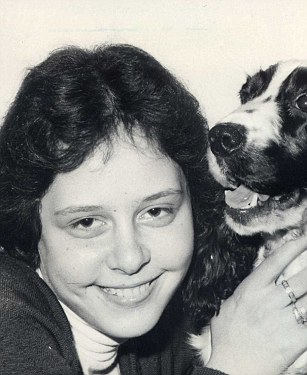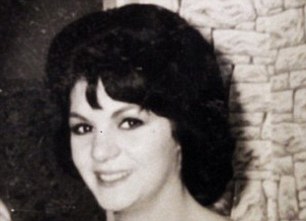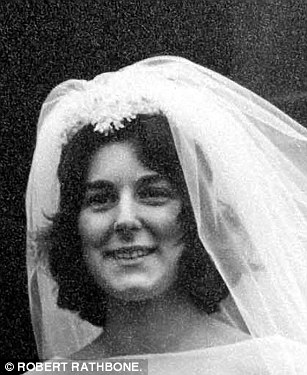wfgodot
Former Member
- Joined
- Mar 4, 2009
- Messages
- 30,166
- Reaction score
- 730
He’s written a song called ‘Leeds United’ that appears to be narrated by Peter Sutcliffe…
‘It’s, err, the tale of a simple northern lad. The starting point was how the hunt for the Ripper dominated my memory of the 1970s. The song wrote itself from there. There’s a reference to a “13-nil defeat”; Leeds fans used to chant “Ripper 13, Police nil”. Sensitive guys, these Leeds fans.’ [http://www.timeout.com/london/music/luke-haines-ten-things]
Police and Home Office officials are reviewing claims that Peter Sutcliffe, the Yorkshire Ripper, may have been responsible for other attacks for which he was never charged.
Unpublished documents with details of other attacks, photofits and suspects that might be linked to Sutcliffe are being examined. West Yorkshire police said on Sunday that they would pursue any new lines of inquiry.
Yorkshire Ripper Peter Sutcliffe could be put back on trial as part of a major new police probe into at least THIRTEEN more suspected victims.
Detectives have already visited two women who survived unsolved brutal attacks during his five-year reign of terror. They asked for statements and DNA samples.
A relative of one of the women told us: "Police knocked on the door and told her she was on a list of possible victims. They asked her to give a new statement and took a sample. They said science has evolved – and that they were looking at 13 other cases."
As a Leeds fan, I think this needs some clarification. This chant wasn't glorifying the ripper, it was aimed at police incompetence. It may not have been in the best taste, admittedly.Luke Haines notes:
Hes written a song called Leeds United that appears to be narrated by Peter Sutcliffe
Its, err, the tale of a simple northern lad. The starting point was how the hunt for the Ripper dominated my memory of the 1970s. The song wrote itself from there. Theres a reference to a 13-nil defeat; Leeds fans used to chant Ripper 13, Police nil. Sensitive guys, these Leeds fans. [http://www.timeout.com/london/music/...es-ten-things]
RSBM video
WAS SUTCLIFFE BEHIND THESE ATTACKS TOO?
Debra Schlesinger: Murdered in Leeds in April 1977, the 18-year-old has long been suspected of being another of Sutcliffes victims.
She was stabbed through the heart as she walked down the garden path of her home after a night out.
Witnesses recalled seeing a dark, bearded man near the scene. Two days later Sutcliffe murdered Patricia Atkinson in Bradford.
Maureen Lea: The 20-year-old art student survived an attack on an October night in 1980. As she walked through the grounds of Leeds University she was grabbed from behind like many Ripper victims and repeatedly hit about the head, leaving her with many injuries.
The attack took place close to where Sutcliffe murdered Upadhya Bandara the previous month and Jacqueline Hill weeks later.
Gloria Wood: Miss Wood, then aged 28, was attacked while walking across a school playing field in Bradford in November 1974.
She was hit several times over the head with a hammer by a man who offered to carry her bags. She suffered terrible injuries but survived.
Her description of the attacker was strikingly similar to the appearance of Sutcliffe, who lived nearby.
Fred Craven: In April 1966, almost a decade before Sutcliffes first official attack, bookmaker Fred Craven was smashed over the head at his shop in Bingley, West Yorkshire, by robbers who stole £200.
Police arrested Michael Sutcliffe, the Yorkshire Rippers younger brother, but they failed to interview Peter Sutcliffe, who had repeatedly pestered Mr Cravens daughter to go out with him. At the time, the two families lived near each other. The murder remains unsolved.
Rosemary Stead: The 18-year-old shop assistant was followed down the side of a field in Queensbury, Bradford, in January 1976. She was hit from behind and suffered serious head injuries. Her attacker resembled Sutcliffe.
Tracy Browne: Aged just 14, Tracy was hit five times with a hammer from behind while walking along a country lane in Silsden, West Yorkshire, in August 1975. She needed brain surgery to survive. Sutcliffe was never convicted of the assault.

Tracy Brown: Aged just 14, Tracy was hit five times with a hammer from behind while walking along a country lane in Silsden, West Yorkshire
Gloria Booth: The married 29-year-old was found near-naked and strangled in a park in Ruislip, West London, in June 1971. Detectives did not link the murder to Sutcliffe, but her family believes her injuries bear all the hallmarks of a Ripper killing.

Gloria Booth: The married 29-year-old was found near-naked and strangled in a park in Ruislip, West London
Wendy Sewell: Mrs Sewell, 32, a secretary, was found with fatal injuries in a cemetery in Bakewell, Derbyshire, in September 1973. The case became known as the Bakewell Tart killing because of her promiscuous reputation. Groundsman Stephen Downing was convicted the next year but this was overturned in 2002. Derbyshire Police later announced the case was closed.

Wendy Sewell: Mrs Sewell, 32, a secretary, was found with fatal injuries in a cemetery in Bakewell, Derbyshire.
Read more: http://www.dailymail.co.uk/news/art...trial-13-suspected-victims.html#ixzz46q63VtCG
Irene Vidler says police officers told her mum they were “99% sure” serial killer Peter Sutcliffe murdered her husband, but that they lost crucial evidence to prove it.
Bookie Fred Craven, 61, is believed to have become one of the Ripper’s first victims when he was struck down in his office in Bingley, West Yorkshire in April, 1966...
Irene recalls Bingley-born Sutcliffe as a “nasty piece of work”, although he even had tea with the family on occasion.
Peter Sutcliffe may well have killed others but he's also carrying the can for at least one other killer.
'The Yorkshire Ripper' was really just a bogey man invented by the tabloid media that hid the horrifying true scale of random acts of violence against women in Northern England during that period.
I'd be surprised if he wasn't responsible for other attacks. Whether any can be proven is a different matter.
From Melmoth's link above. Possible other victims, but I'm not sure these are necessarily the same as those the police are re-investigating.
There's an interview Maureen Lee here:
At 3:10 she says her attacker was disturbed by a passer-by at the end of Woodhouse Road. I assume she means Woodhouse Lane, which would put her near the main LU campus, maybe she wasn't in a Halls of residence.
I'm also surprised you didn't hear anything about these attacks, even if it was just rumours on campus.
[FONT=&]The Yorkshire Ripper, Peter Sutcliffe, who murdered 13 women, may be released from the secure psychiatric hospital Broadmoor and sent to a mainstream prison after a tribunal concluded that his mental illness was under control.
[/FONT]
[FONT=&]Sutcliffe was given 20 life sentences when he was convicted in 1981, but was diagnosed with paranoid schizophrenia in 1984 and transferred to Broadmoor in Berkshire.
[/FONT]
[FONT=&]On Thursday, a mental health tribunal ruled that he no longer required clinical treatment and could therefore be moved back into the mainstream prison system. He is serving a whole-life tariff and will die in jail.
https://www.theguardian.com/uk-news/2016/aug/12/yorkshire-ripper-to-be-sent-to-mainstream-prison[/FONT]
The Yorkshire Ripper has confessed on tape to a savage attack on a 14-year-old schoolgirl because he wrongly thought she was a prostitute.
Peter Sutcliffe, 71, admitted hitting Tracy Browne with a branch before throwing her over a wall.
Despite having suffered two fractures to her skull Tracy managed to stagger to a farmworker's caravan and he raised the alarm.
Two months after the August 1975 crime in Silsden, West Yorkshire, Sutcliffe killed his first [originally accredited] victim Wilma McCann, 28.
